Sturgeon’s law holds that 90% of everything is mediocre. This condition occurs because most people are not thinking at all about what they are doing. When they want to be important, they create a metal band to make them look important, instead of trying to make good music. With brutal cruelty and ecstatic sadism we separate the poseurs and tryhards from the real deal with Sadistic Metal Reviews…
Collision/The Rotted – Split
Three tracks comprise this aggressive split. Collision leads in with two tracks of rigid, violent grindcore which incorporates a few ideas from percussive death metal to give it additional crush. These tracks keep intensity through speed and chaotic blasting but harbor no surprises in chord progression of phrase, which makes them fun to listen to incidentally but perhaps nothing one would seek out. The Rotted on the other hand slashes out a single track of old-school hardcore with a catchy chorus, extremely rudimentary but melodically hookish riff balanced against a sawing (but not grinding) verse riff, and genre conventions from older punk. Both of these bands aim to uphold the genres they are from and do it competently but when a genre is well-established, every band is a local band until it rises above from some distinctive personality or idiosyncratic perception. They do not need to be “unique,” since such a thing has never really existed, but they must be their own creation. Both bands here feel like minor variations on known archetypes and, while competent, do not inspire particular allegiance. That being said, they both remain enjoyable for that local grindcore/band experience, and together these tracks enhance each other like memories of the set you saw while drinking craft beer and talking up that sexy Facebook consultant at a bar that has changed hands eleven times in the last quarter. It would be interesting to see what these bands did with a longer recording as that would put more pressure on them to differentiate style or at least expand upon it.
Decline of the I – Rebellion
Someone raised this question the other day: is metalcore a new style, or simply incompetent death metal? After all, we had bands who tried that Pantera-Fugazi-Nasum hybrid stuff in the past and generally it turned out that they were simply terrible songwriters who had no idea how to focus on an idea and bring it to clarity. Similarly, one wonders about “post-metal.” Is this just idiots dressing up garbage and incompetence as the avantgarde, because that’s what the avantgarde really is? Seriously, I’d love to see one of these artists who makes sculptures of his own feces that interpret the metaphysics of Schopenhauer as quantum physics, for once, just for once, make a classically beautiful art work first so I don’t simply think he’s a Damien Hirsch style conjob. Decline of the I is really hilarious when you realize that it thrusts this question upon us. It sounds like stoned desperation with a home studio: random bits of metal songs that went nowhere, stitched together with what every 90s con man used in his band, the sampler. It doesn’t flow in any direction or express anything other than “moments” of perception, like standing on a street corner while two cars collide and a pigeon defecates on a 24-year-old copy of Thus Spoke Zarathustra. Rebellion amalgamates speed metal, death metal and punk riffs together with a bunch of influences outside of metal. There is no continuity, only a series of exhibits like a subway train going through an art gallery. These clowns use the different styles as wallpaper slides to color otherwise empty music and hide the collection of hackneyed tropes made “new” by hackneyed avantgarde tomfoolery and snake oil salesperson confidence jobs. Even the most incompetent ordinary metal band is preferable because its dishonesty is limited to its music, while Decline of the I brings in every posture, pose, pretense and fabrication necessary to make this hacked-up studio defecation seem like music.
Napalm Death – Apex Predator – Easy Meat
It has often been suspected that bands, when they run out of actual motivation, pick one off the shelf to make themselves seem profound. Their profundity means our guilt if we do not buy the album because we have turned down a great gift to humanity, you dig? But the fact is that they went into the big closet of Hollywood motivations — the poor, the downtrodden, the children, suffering animals, drug addiction and being raped — and pulled out one giant compulsion to make you like their empty music. Napalm Death went down this route when after Fear, Emptiness, Despair guitarist Jesse Pintado embarked on a course of alcoholism so crippling he could not bail out the rest of the band anymore. That is too bad, since Pintado essentially revitalized the band and created three of their best albums with his homegrown grindcore know-how. Ever since then, Napalm Death has been wandering in a wilderness of not giving a damn buuutttt something needs to pay for this condo, so they puke out another album. Apex Predator – Easy Meat takes Napalm Death full cycle from a band that protested pop music to a band that makes the worst of pop. This pretense-pop would be OK if it were good pop, because then we could laugh off the guilt, but instead it is a series of very similar riffs that break into very similar choruses which cycle until the end with a few breaks that are almost visual or high school theater department drama because they are so transparent and obviously manipulative. It was embarrassing to be noticed listening to this because it is not just bad, it is inept; its ineptitude is covered up with rock star glitz and production, but it still sounds hollow and horrifyingly empty. Please, give these guys jobs in media relations because they are done as a band and this embarrassing formalization just removes whatever shreds of self-respect they once had.
The Chasm – Farseeing the Paranormal Abysm
Although Daniel Corchado is obviously one of the most talented composers in underground metal, The Chasm does not present his best work. The appeal can be immediately seen: epic metal band with lengthy songs that play out internal conflicts in a way the audience can identify with. Under the hood, while there are some touches of DBC-style riffing, what greets us here is the cliches of 1980s speed metal with added progressive-ish fills that demonstrate guitar talent and knowledge of harmony. The songs remain basic when you factor these out, excepting the longer instrumental passages, which also rely on riffs from the past dressed up or lots of rhythmic downpicking that adds little other than keeping a place in the harmony. Additionally, occasionally comical vocals and a number of hackneyed metal stalwarts mar this release, but the real crisis here is the lack of interesting riffs, the shamminess of the songs in dressing up the mundane as exotic, and the coup de grace which is the inability of this album or its songs to convey an emotional experience outside of the music itself. They resemble nothing other than constant variations in a style of technical speed metal riffing that bands like Anacrusis made great by putting around evocative songs, but the latter part is missing here. Individual moments shine with the brilliance that can be expected of Corchado, and moments in songwriting show insight. The problem is that there needs to be more of the random or evocative in riffs, which would allow Corchado’s song structure ideas to take on significance, and less of the highly talented progressive tinged touches that are impressive on a guitar-playing level but compositionally, serve the role of filler. On the whole, this album resembles the kind of tuned-up musical entropy that all of us ran to death metal to escape around 1989 or so.
Edge of Haze – Illumine
In theory, this should be hated: a hybrid of Gothic music, power metal and djent-inspired percussive speed metal. In reality, Edge of Haze restore balance to these genres by putting them in the right context. Speed metal is the hard rock of the 2010s, thirty years after its release, and updating it with a smary 1980s Gothic pop vocal and power metal “inspirational” choruses gives it the right context as the popular music of the age. It may be cheesy, as one might expect from these populist niche genres, but Edge of Haze seems at least comfortable in its own skin and the removal of the usual death metal vocals gives this album both greater levity and a greater intensity, as well as removing the crowding effect of harsh monotonic vocals. In addition, this re-introduces the voice as a melodic instrument which allows guitars to focus purely on rhythm and rudiments of harmony without losing direction to a song. Edge of Haze executes this hybrid well by capturing the dark pop aspects of Gothic and creating for them a framing of boldly abrasive metal that runs the gamut of styles from the last three decades without creating an oil-on-water effect by having those styles dominant the rhythm and song structure for a segment so that other parts seem like extra organs in a cadaver, puzzling the drunken pathologist at 4 AM as he files the report on the latest Jane Doe. Edge of Haze present something as intense as nu-metal but with a darker aesthetic that carries more gravitas than the dad-hating victimhood affirmation that nu-metal conveyed, also removing the rap/rock beats and making a form of popular metal that can be not only relatively heavy, but have a grace of beauty in darkness, and still write some quality pop songs. Aesthetically, this makes my skin crawl; musically, it is well-done and should be praised for putting this style of music in the context it warrants and deserves.
http://www.youtube.com/watch?v=Qw8qJedbrjA
23 CommentsTags: collision, death metal, decline of the i, edge of haze, goth metal, Grindcore, Hardcore Punk, napalm death, sadistic metal reviews, Speed Metal, the chasm, the rotted

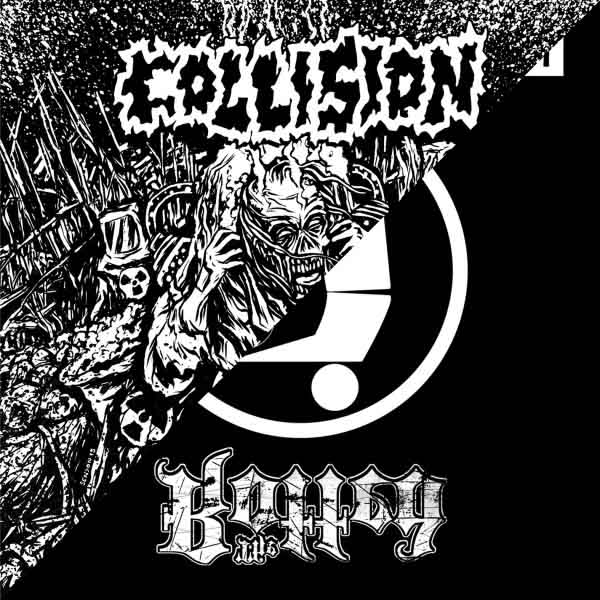
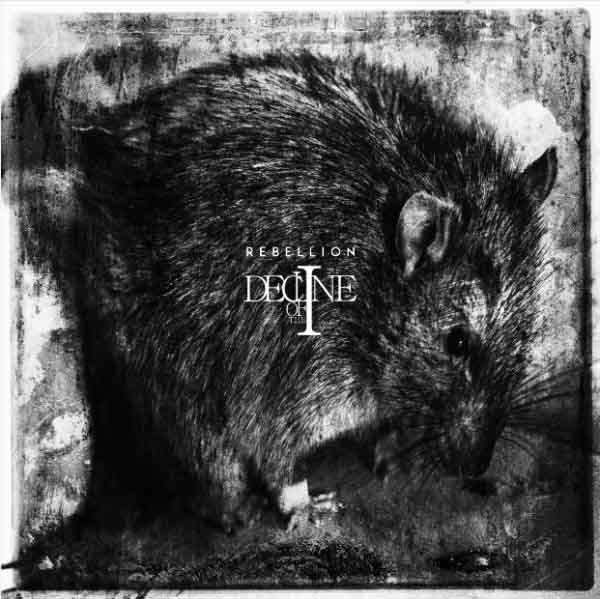
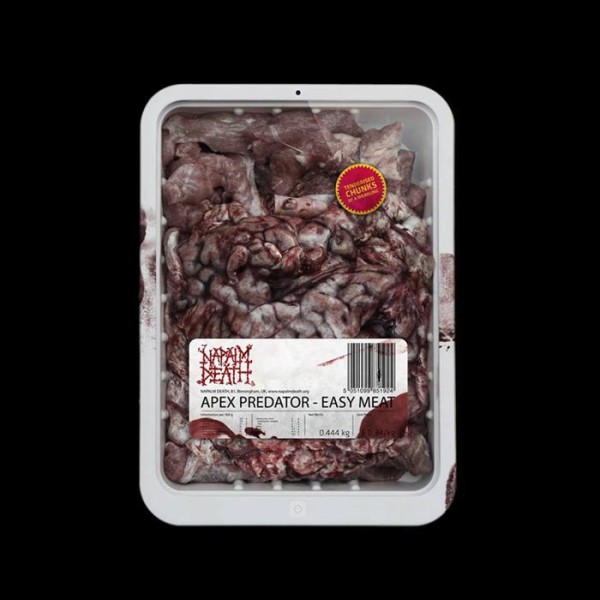
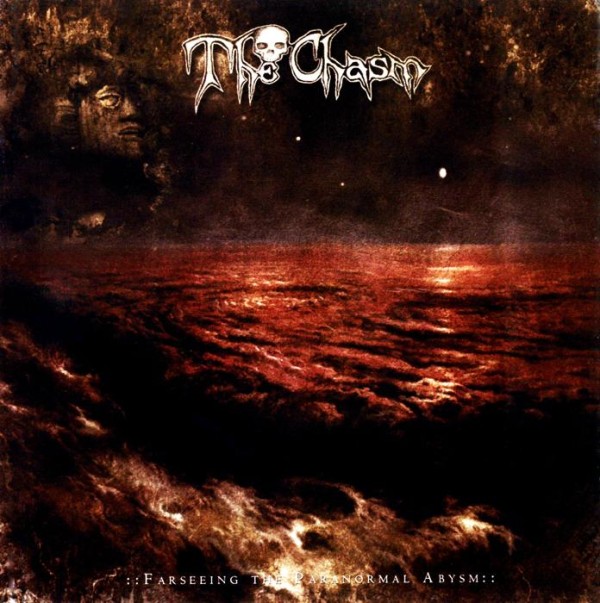
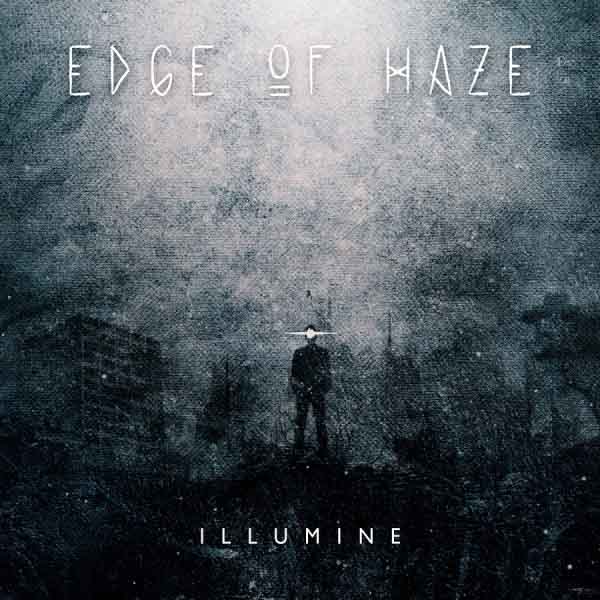
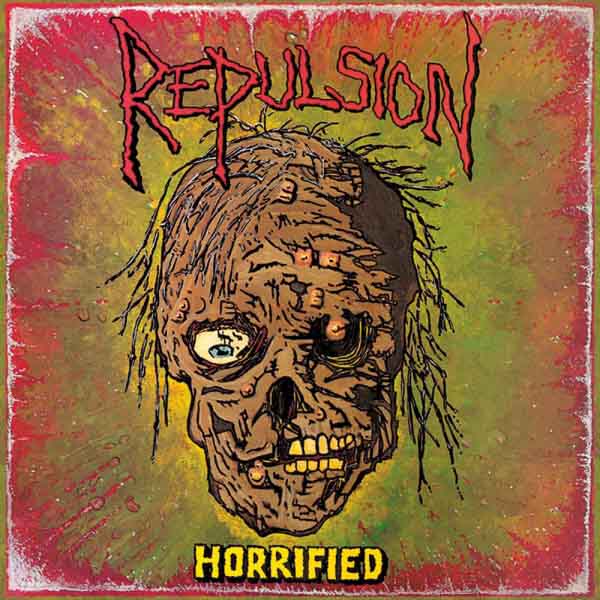
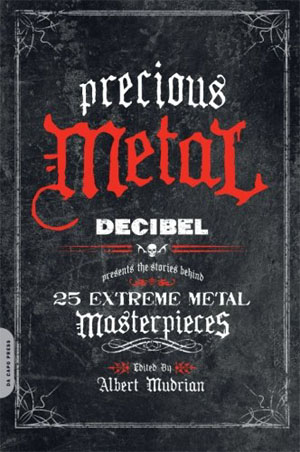
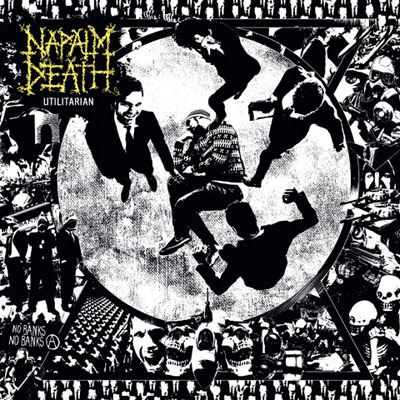 In rock ‘n’ roll, it’s better to die young. Even that is a cliche, but so is rock itself. Formed when corporate investors found a way to combine blues, country, folk and pop into a single product, rock has no real soul and so it pretends. The result is a parade of cliches and you hope that if you change the order enough, you become the next Jim Morrison or Morrisey. The sad truth is that rock bands come in two types: the ones who have three albums worth of good ideas and then burn out, and the ones who make the same song over and over again when they run out of energy. If a teenage version of yourself ever walked into a record store and spotted the guy with thinning hair, faded tattoos, and a bunch of stories and even more excuses but no accomplishments, you know what the new Napalm Death is. This is the sound of exhaustion pretending it has vitality for long enough to sell the slop to the kids and move on. The songs are built around the same tired chord progressions, which are barely even progressions in any sense except chromatic patterns at convenient places on the fretboard. The rhythms and riff ideas come from past Napalm Death albums, with a few influences borrowed from older death metal scattered throughout. On top of this, the aged suit-wearing corporate rock Napalm Death throws a single “outside” nuance per song. One tries to imitate the noise/avant-jazz of the early 1990s. Another is halfway to being a Rite of Spring tune. Still another apes the blur-core aesthetic of the new style of grindcore. Others try to return to the bouncy glory days of Fear, Emptiness, Despair or Utopia Banished. Underneath the skin however there is a total lack of ideas or even the guts to just go ahead with something that feels right. This is a cynical, manipulative album hiding a plastic soul which just wants your cash. In aging into oblivion instead of dying young as rock heroes, Napalm Death have made a mockery of everything they stood for. By wrapping this in a trendy surface and trying to pull the works of classic death metal over them like a camouflage mantle, Napalm Death have created a gateway into this genre from the soulless and burnt-out. You have made us all hipsters. Avoid this horrible album.
In rock ‘n’ roll, it’s better to die young. Even that is a cliche, but so is rock itself. Formed when corporate investors found a way to combine blues, country, folk and pop into a single product, rock has no real soul and so it pretends. The result is a parade of cliches and you hope that if you change the order enough, you become the next Jim Morrison or Morrisey. The sad truth is that rock bands come in two types: the ones who have three albums worth of good ideas and then burn out, and the ones who make the same song over and over again when they run out of energy. If a teenage version of yourself ever walked into a record store and spotted the guy with thinning hair, faded tattoos, and a bunch of stories and even more excuses but no accomplishments, you know what the new Napalm Death is. This is the sound of exhaustion pretending it has vitality for long enough to sell the slop to the kids and move on. The songs are built around the same tired chord progressions, which are barely even progressions in any sense except chromatic patterns at convenient places on the fretboard. The rhythms and riff ideas come from past Napalm Death albums, with a few influences borrowed from older death metal scattered throughout. On top of this, the aged suit-wearing corporate rock Napalm Death throws a single “outside” nuance per song. One tries to imitate the noise/avant-jazz of the early 1990s. Another is halfway to being a Rite of Spring tune. Still another apes the blur-core aesthetic of the new style of grindcore. Others try to return to the bouncy glory days of Fear, Emptiness, Despair or Utopia Banished. Underneath the skin however there is a total lack of ideas or even the guts to just go ahead with something that feels right. This is a cynical, manipulative album hiding a plastic soul which just wants your cash. In aging into oblivion instead of dying young as rock heroes, Napalm Death have made a mockery of everything they stood for. By wrapping this in a trendy surface and trying to pull the works of classic death metal over them like a camouflage mantle, Napalm Death have created a gateway into this genre from the soulless and burnt-out. You have made us all hipsters. Avoid this horrible album.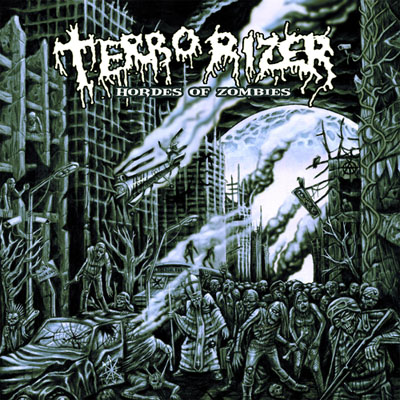 Melba toast has a crunchy exterior, yet turns soft in your mouth. Lightly toasted, it is sweet upon contact with saliva, and will never upset your digestion. In fact, it is like baby food, except that it is crunchy. The new Terrorizer is baby food, true, but it’s awesome baby food. The band have focused not on innovation, not on a nifty surface, and definitely not on topic, since they’re beating the dead couch of the zombie album. What they did do was make something that’s easy to digest but unlike almost all metal released at this time, it’s coherent. Riffs fit together and make sense, even if a kind of pidgin. Rhythms mate effortlessly yet have enough variation to give depth to the compositions. Much of this is pure chromatic, but it captures the momentum of a good riot or fistfight. As a result, it’s easy to listen to and yet maintains its intensity throughout. If you can get over expecting something of emotional profundity like World Downfall, and instead look for the Terrorizer equivalent of Napalm Death’s Fear, Emptiness, Despair (or even Aura Noir’s Black Thrash Attack), you will find in this album a guilty pleasure. It throbs with aggression and yet by not attempting anything too complex, always manages to deliver. There is no attempt here other than to make an energetic, fun, musically-competent grindcore album and Hordes of Zombies rages supreme in this area. Oddly the only new influences seem to be a later Swedish death metal melodic tendency, and a study of riffs from the recent post-death metal era in which the punk riff and the recycled speed metal riff have crept back in. Wisely however Terrorizer keep their music extremely basic, along the lines of the first Brutal Truth album, but give it compelling rhythms and an underlying furor that makes us tune in to see how such violence can also be so much fun to listen to.
Melba toast has a crunchy exterior, yet turns soft in your mouth. Lightly toasted, it is sweet upon contact with saliva, and will never upset your digestion. In fact, it is like baby food, except that it is crunchy. The new Terrorizer is baby food, true, but it’s awesome baby food. The band have focused not on innovation, not on a nifty surface, and definitely not on topic, since they’re beating the dead couch of the zombie album. What they did do was make something that’s easy to digest but unlike almost all metal released at this time, it’s coherent. Riffs fit together and make sense, even if a kind of pidgin. Rhythms mate effortlessly yet have enough variation to give depth to the compositions. Much of this is pure chromatic, but it captures the momentum of a good riot or fistfight. As a result, it’s easy to listen to and yet maintains its intensity throughout. If you can get over expecting something of emotional profundity like World Downfall, and instead look for the Terrorizer equivalent of Napalm Death’s Fear, Emptiness, Despair (or even Aura Noir’s Black Thrash Attack), you will find in this album a guilty pleasure. It throbs with aggression and yet by not attempting anything too complex, always manages to deliver. There is no attempt here other than to make an energetic, fun, musically-competent grindcore album and Hordes of Zombies rages supreme in this area. Oddly the only new influences seem to be a later Swedish death metal melodic tendency, and a study of riffs from the recent post-death metal era in which the punk riff and the recycled speed metal riff have crept back in. Wisely however Terrorizer keep their music extremely basic, along the lines of the first Brutal Truth album, but give it compelling rhythms and an underlying furor that makes us tune in to see how such violence can also be so much fun to listen to.
